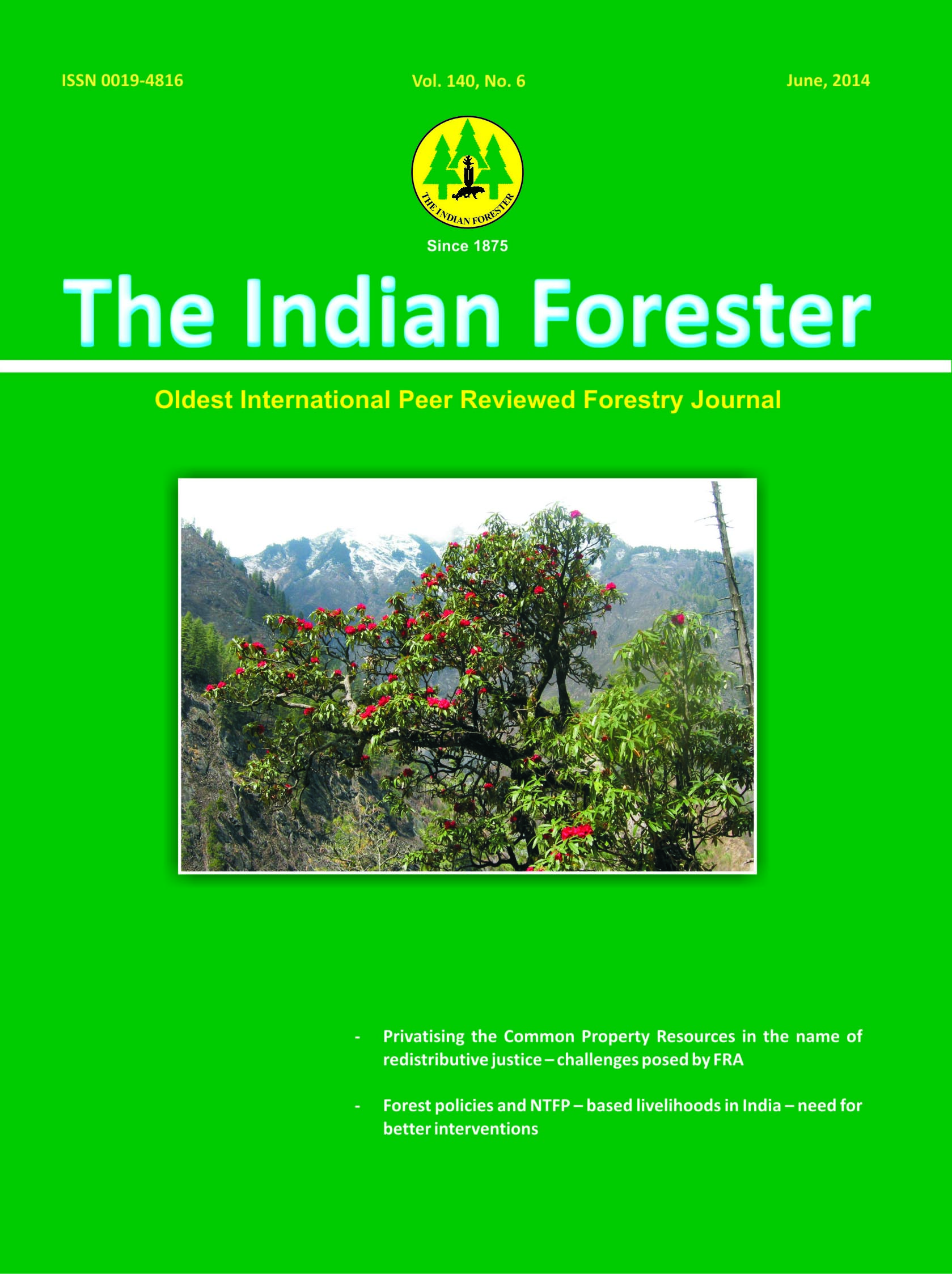Growth Study of Artificially Raised Sal Plants in Early Years after Field Planting
DOI:
https://doi.org/10.36808/if/2014/v140i6/50544Keywords:
Root-shoots, Vegetative Propagation, Artificially Rooted Cuttings, Field TrialAbstract
Sal (Shorea robusta) is a dominant tree species and its global range lies between 20 -30 N latitude and 75 -95 E longitude. Sal forests are spread in about 10 million hectare in India. Sal forests come under the category of climax forests where tall and robust Sal trees allow several layers of vegetation to grow under or alongside them. Due to its "dyeing back" tendency in natural and artificial regeneration, sal forests are not being established in the hard natural environment of plantation sites in early years of planting. The present study reveals the growth pattern of artificially raised sal plants during field trials in early years of planting. Plants raised from seeds in nursery in poly bags having one year, two year and three year age; plants raised from artificially rooted sal cuttings in mist chamber and kept in tube for one year; and plants raised from pre-sprouted root-shoots in poly bags prepared from one year old sal seedlings were planted together and study of growth was undertaken for initial 3 years. Early growth study reveals that plants raised from seeds in poly bags having 2 years age at the time of planting are most suitable for field planting. Plants raised from rooted cuttings and root-shoots also establish themselves and grow exceptionally well.Downloads
Download data is not yet available.
Downloads
Published
2014-06-13
How to Cite
Singh, L. R. (2014). Growth Study of Artificially Raised Sal Plants in Early Years after Field Planting. Indian Forester, 140(6), 570–574. https://doi.org/10.36808/if/2014/v140i6/50544
Issue
Section
Articles
License
Unless otherwise stated, copyright or similar rights in all materials presented on the site, including graphical images, are owned by Indian Forester.





